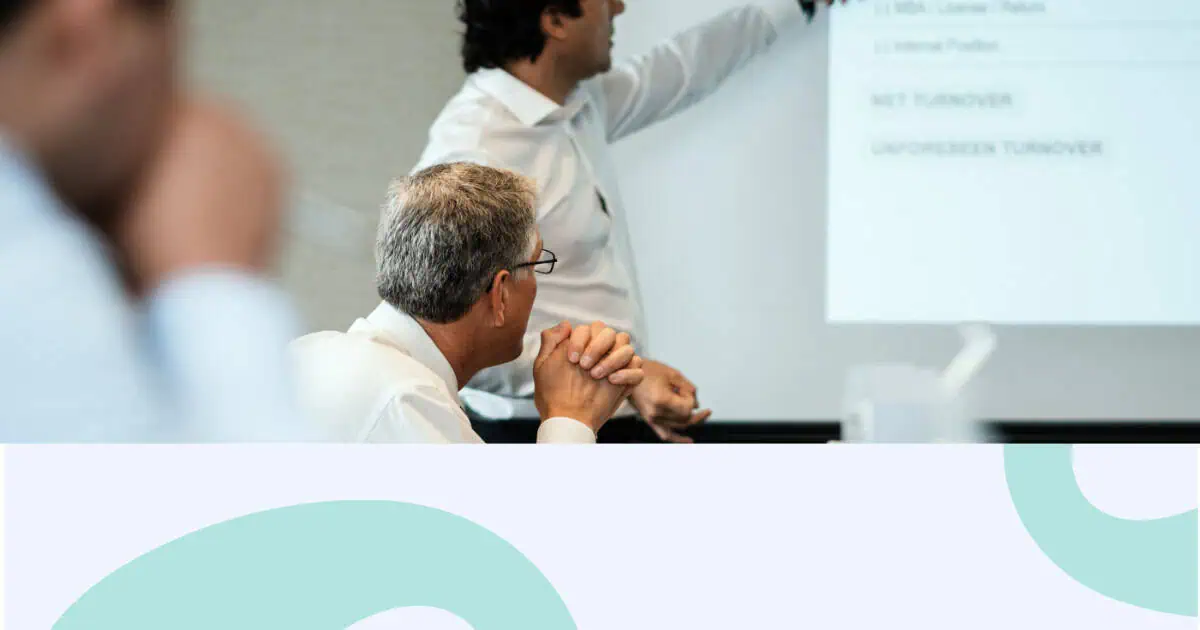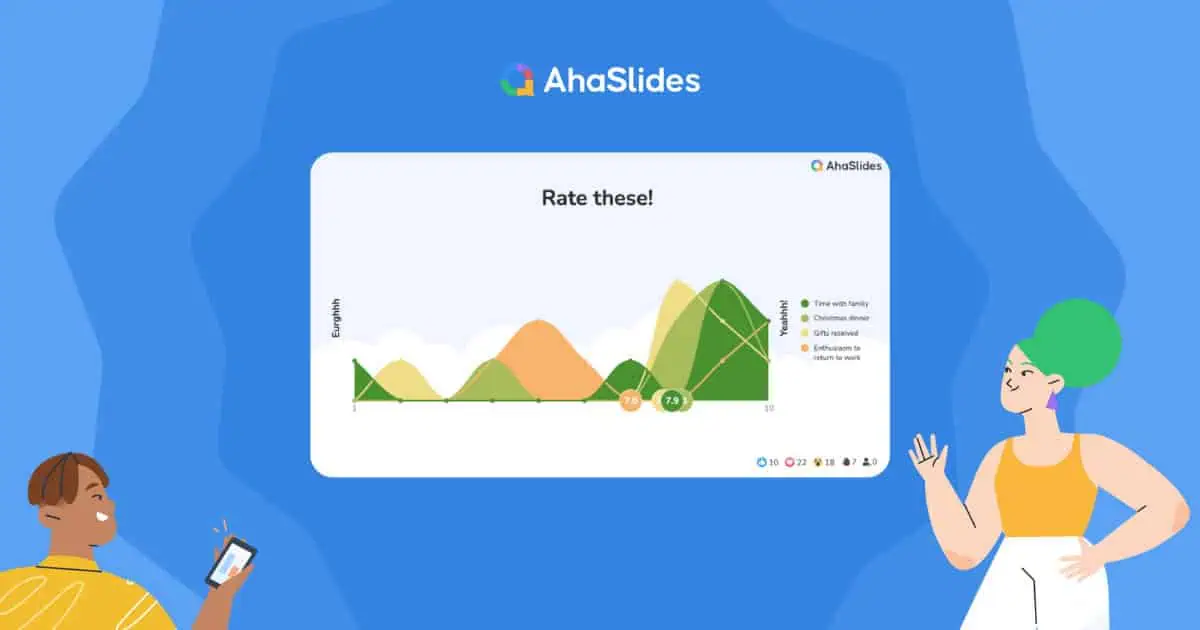Sa karon nga ekonomiya sa atensyon nga nabansay sa TikTok, aduna kay mga 8 segundos aron makuha ang interes sa usa ka tawo—mas gamay nga oras kaysa usa ka goldfish. Kung kana paminawon makahadlok alang sa usa ka 5-minuto nga presentasyon, ania ang maayong balita: mugbo nga mga presentasyon ang imong sekreto nga hinagiban.
Samtang ang uban nag-agay sa 60-slide deck nga nagtan-aw sa mga mata nga nagsidlak, maghatag ka usa ka nakapunting nga mensahe nga nagpabilin. Kung nag-pitch ka sa mga tigpamuhunan, nagbansay sa usa ka hilit nga team, nagpresentar sa mga nahibal-an sa panukiduki, o nag-interbyu alang sa imong gipangandoy nga papel, ang pag-master sa 5-minuto nga format dili lang kombenyente-kini nagtino sa karera.
Kini nga giya nagkuha sa siyensya sa presentasyon, mga panabut gikan sa mga propesyonal nga tigbansay nga naghatud sa gatusan nga mga sesyon matag tuig, ug napamatud-an nga mga teknik gikan sa mga mamumulong sa TED aron matabangan ka sa paghimo og mga presentasyon nga moapil, makadani, ug magbilin ug malungtarong epekto.
Kaundan
Ngano nga ang 5-Minute nga mga Presentasyon Nanginahanglan ug Lahi nga Pamaagi
research gikan sa neuroscientist nga si John Medina nagpakita nga ang atensyon sa mamiminaw mikunhod pag-ayo matag 10 minuto sa mga tradisyonal nga presentasyon. Sa virtual nga mga setting, kana nga bintana mogamay sa 4 minuto ra. Ang imong 5-minuto nga presentasyon hingpit nga naa sa sulod sa kini nga panag-uban nga matam-is nga lugar-apan kung imong gidesinyo kini sa husto.
Ang mga stake mas taas nga adunay mugbo nga mga presentasyon. Ang matag pulong importante. Ang matag slide hinungdanon. Wala’y oras alang sa tigpuno, wala’y lugar alang sa mga tangent, ug wala’y pagtugot alang sa mga teknikal nga fumble. Gipakita sa panukiduki sa industriya nga 67% sa mga propesyonal karon mas gusto ang mugbo, nakapokus nga mga presentasyon kaysa mga tag-as-apan kadaghanan sa mga presenter nagpadayon gihapon sa mga mugbo nga mga pakigpulong ingon gipamubu nga mga bersyon sa mga taas, nga panagsa ra magamit.
Unsaon Paghimo ug 5-Minuto nga Presentasyon
Lakang 1: Pilia ang Imong Topic nga May Surgical Precision

Ang pinakadako nga sayop nga nahimo sa mga presenter? Naningkamot sa pagtabon sa sobra nga yuta. Ang imong 5-minuto nga presentasyon kinahanglang matubag usa ka kinauyokan nga ideya—dili tulo, dili bisan duha. Hunahunaa kini nga usa ka laser, dili usa ka suga sa baha.
Ang imong topiko kinahanglang makapasar niining upat ka bahin nga pagsulay:
- Usa ka focal point: Mahimo ba nimo kini ipasabut sa usa ka sentence? Kung dili, pig-ot kini.
- Kalambigitan sa mamiminaw: Nakasulbad ba kini sa usa ka problema nga aktibo nilang giatubang? Laktawan ang impormasyon nga ila nang nahibaloan.
- Kayano: Mahimo ba nimo kini ipasabut nga wala’y komplikado nga background? I-save ang makuti nga mga hilisgutan alang sa mas taas nga mga format.
- Ang imong kahanas: Magpabilin sa mga hilisgutan nga nahibal-an nimo pag-ayo. Limitado ang oras sa pag-andam.
Alang sa inspirasyon, hunahunaa kining napamatud-an nga 5-minutos nga mga hilisgutan sa lainlaing mga konteksto:
- Propesyonal nga mga setting: 3 nga mga estratehiya nga gipatuyok sa datos aron makunhuran ang pagkahugno sa kostumer, Giunsa pag-usab sa mga himan sa AI ang among daloy sa trabaho, Ngano nga ang among mga resulta sa Q3 nagpahibalo sa usa ka estratehikong pivot
- Pagbansay ug L&D: Usa ka batasan nga nagbag-o sa hilit nga pasundayag sa team, Ang sikolohiya sa luyo sa mga marka sa pag-apil sa empleyado, Giunsa ang paghatag feedback nga tinuud nga nagpauswag sa pamatasan
- Mga konteksto sa akademiko: Panguna nga mga nahibal-an gikan sa akong panukiduki sa pagpadayon, Giunsa ang epekto sa social media sa paghimog desisyon sa mga tin-edyer, Ang pamatasan sa pag-edit sa gene sa tulo ka tinuod nga mga senaryo
Lakang 2: Pagdesinyo sa mga Slide nga Nagpadako (Dili Makabalda)
Ania ang usa ka kamatuoran nga nagbulag sa amateur gikan sa propesyonal nga mga presenter: ikaw ang presentasyon, dili imong mga slide. Ang mga slide kinahanglang mosuporta sa imong narrative, dili mopuli niini.
Ang pangutana sa pag-ihap sa slide
Ang panukiduki gikan sa mga eksperto sa presentasyon nagsugyot og 5-7 ka mga slide alang sa 5-minutos nga pakigpulong—halos usa ka slide kada minuto nga adunay oras sa imong pag-abli ug pagtapos. Bisan pa, ang mga mamumulong sa TED usahay mogamit 20 nga mga slide nga paspas (10-15 segundos matag usa) aron mapadayon ang visual momentum. Ang mas importante kay sa gidaghanon mao ang katin-aw ug katuyoan.
Mga prinsipyo sa disenyo sa sulod
- Minimum nga teksto: Maximum nga 6 ka pulong kada slide. Ang imong 700 ka pulong nga script kinahanglan isulti, dili ipakita.
- Visual hierarchy: Gamita ang gidak-on, kolor, ug puti nga luna aron sa paggiya sa pagtagad sa unsay labing importante.
- Pagtan-aw sa datos: Usa ka mapugsanon nga estadistika o graph kada slide nagpildi sa mga paragraph sa pagpatin-aw.
- Consistent nga disenyo: Ang parehas nga mga font, kolor, ug mga layout sa tibuuk nga pagpadayon sa propesyonalismo.
Pro tip: Himua nga interactive ang imong presentasyon gamit ang live poll, Q&A features, o dali nga mga quiz. Gibag-o niini ang mga passive viewers nga mahimong aktibo nga mga partisipante ug labi nga nagpauswag sa pagpadayon sa kasayuran. Mga himan sama sa AhaSlides tugotan ka nga i-embed kini nga mga bahin nga hapsay, bisan sa 5-minuto nga mga format.
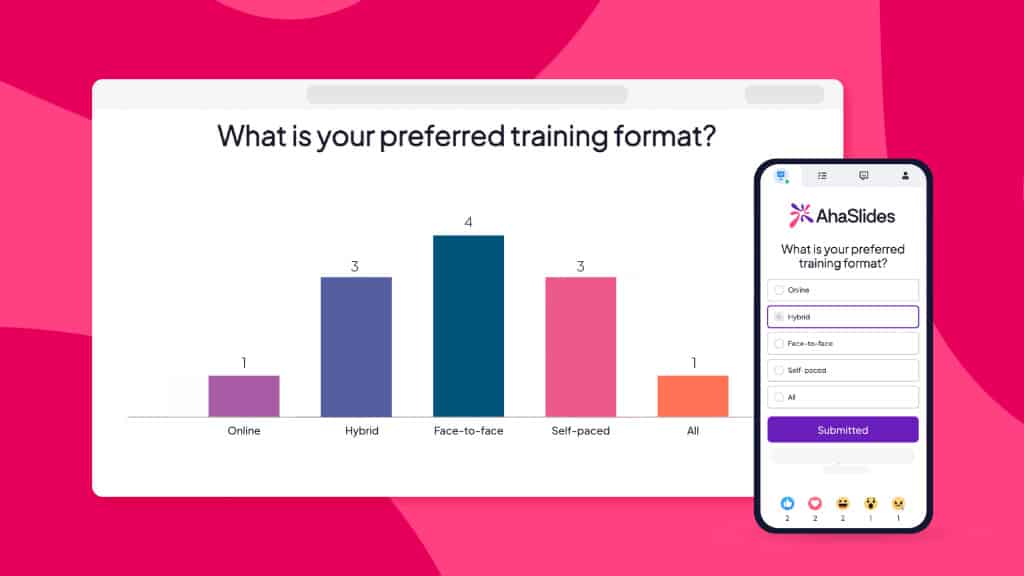
Lakang 3: Pag-master sa Timing Uban sa Militar nga Precision
Sa usa ka 5-minuto nga presentasyon, matag segundo adunay trabaho. Wala’y buffer alang sa rabling o pagbawi gikan sa mga sayup. Ang mga propesyonal nga mamumulong nagsunod niining gisulayan sa gubat nga istruktura:
Ang napamatud-an nga pormula sa alokasyon sa oras
- 0:00-0:30 - Pag-abli sa kaw-it: Kuhaa ang atensyon sa usa ka makapakurat nga kamatuoran, makapukaw nga pangutana, o makapadani nga istorya. Laktawan ang taas nga mga pasiuna.
- 0:30-1:30 - Ang problema: I-establisar kon nganong angayng magpakabana ang imong mamiminaw. Unsang hagit ang gitubag sa imong topiko?
- 1:30-4:30 – Imong solusyon/panabot: Kini ang imong kinauyokan nga sulud. Ihatag ang 2-3 nga yawe nga mga punto nga adunay nagsuporta nga ebidensya. Guntinga ang bisan unsa nga dili kinahanglanon.
- 4:30-5:00 – Konklusyon ug call-to-action: Ipalig-on ang imong panguna nga mensahe ug isulti sa mamiminaw kung unsa ang sunod nga buhaton.
Pag-adjust sa virtual nga presentasyon
Pagpresentar sa layo? Paghimo sa mga higayon sa pakigsabot matag 4 ka minuto (matag panukiduki ni Medina). Paggamit og mga botohan, pagpangayo og mga tubag sa chat, o pagpangutana og retorika. Susiha ang anggulo sa imong camera (level sa mata), siguroha ang kusog nga suga gikan sa atubangan, ug sulayi daan ang kalidad sa audio. Ang mga virtual nga mamiminaw mas dali nga makabalda, busa ang interaksyon dili opsyonal-kini hinungdanon.
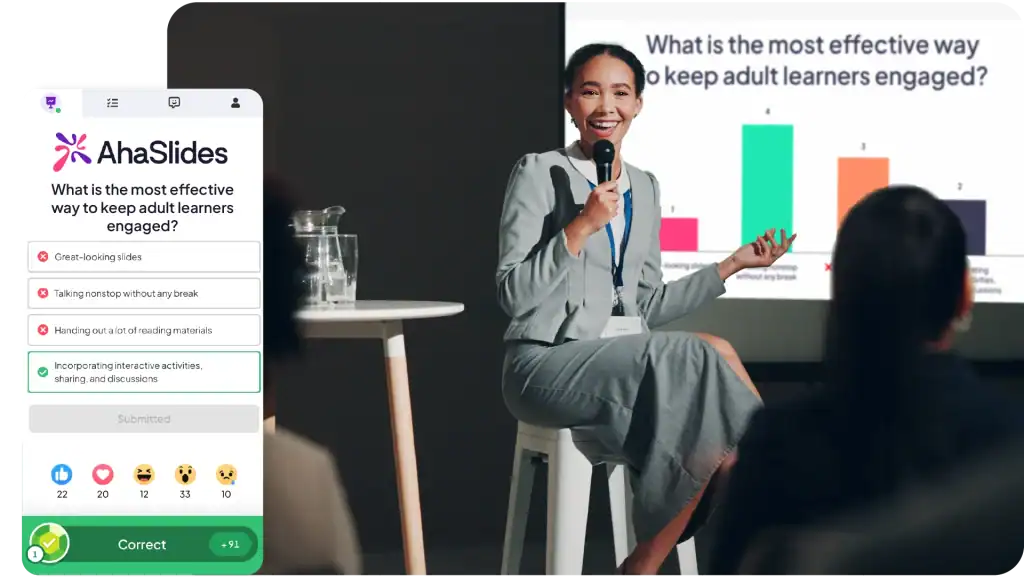
Lakang 4: Paghatud Uban ang Tinuod nga Pagsalig

Bisan ang maayo nga sulud nahulog nga patag sa dili maayo nga paghatud. Ania kung giunsa pagduol sa mga propesyonal ang higayon sa kamatuoran:
Pagpraktis sama sa imong karera nagdepende niini (tungod kay mahimo kini)
Pag-ensayo sa imong 5-minuto nga presentasyon labing menos 5-7 ka beses. Gamit ug timer. Irekord ang imong kaugalingon ug tan-awa kini og balik—sakit apan bililhon. Pagpraktis hangtod mahimo nimo nga ihatud ang imong sulud nga natural nga wala magbasa sa mga slide. Ang memorya sa kaunoran nagdala kanimo pinaagi sa kakulba.
Mga teknik sa pagpadala nga nagbulag sa mga amateur gikan sa mga pro
- Nagkalainlain nga Vocal: Lainlain ang dagan, pitch, ug volume. Paghunong sa estratehikong paagi aron mahatagan og gibug-aton—ang kahilom gamhanan.
- Pinulongan sa lawas: Sa personal, gamita ang bukas nga mga lihok ug paglihok nga adunay katuyoan. Sa camera, limitahan ang mga lihok (kini mopadako) ug ipadayon ang pagkontak sa mata sa lens.
- Pagpamahayag: Paghabol sa usa ka mubo, may kalabutan nga pananglitan o anekdota. Ang mga istorya nagpadako sa pagpadayon sa 22x kung itandi sa mga kamatuoran lamang.
- Pagdumala sa enerhiya: Ipares ang imong kusog sa imong mensahe. Madasigon alang sa inspirasyon, gisukod alang sa seryoso nga mga hilisgutan.
- Teknikal nga pagkaandam: Mga kagamitan sa pagsulay 30 minuto nga sayo. Pagbaton og backup nga mga plano alang sa mga isyu sa koneksyon.
Ang sekreto sa koneksyon sa mamiminaw
Hunahunaa ang imong presentasyon isip usa ka panag-istoryahanay, dili usa ka pasundayag. Hupti ang kontak sa mata (o tan-awa ang camera alang sa virtual nga mga presentasyon). Ilha ang mga reaksiyon. Kung mapandol ka, paghunong sa makadiyot ug pagpadayon - ang mga mamiminaw mapasayloon sa pagkatinuod, apan dili sa pagbasa sa mga slide nga robotically.
Sekreto nga tip: Wala ka mahibal-an kung ang imong 5-minuto nga presentasyon adunay epekto? Gamita ang a himan sa feedback aron makolekta dayon ang sentimento sa mga mamiminaw. Nagkinahanglan kini og gamay nga paningkamot, ug malikayan nimo nga mawad-an og bililhong feedback sa dalan.
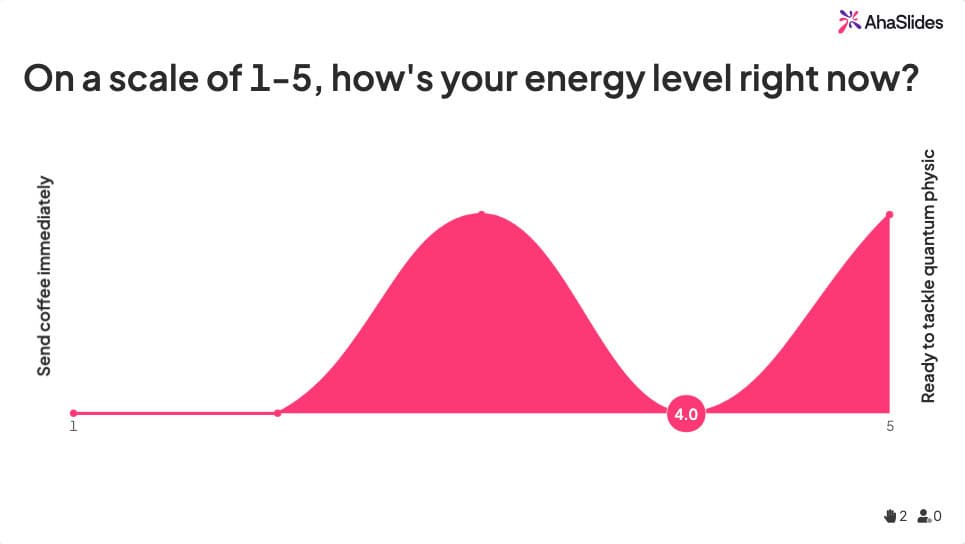
5 Kasagarang Sayop Sa Paghatag ug 5-Minute nga Presentasyon
Nabuntog ug gipasibo namo pinaagi sa pagsulay ug kasaypanan, apan mas sayon ang paglikay sa mga rookie nga sayop kung nahibal-an nimo kung unsa kini👇
- Nagdagan sa panahon: Namatikdan sa mga mamiminaw. Nagtimaan kini sa dili maayo nga pagpangandam ug wala’y pagtahod sa ilang eskedyul. Pagpraktis aron mahuman sa 4:45.
- Sobra nga mga slide: Ang mga slide nga bug-at sa teksto naghimo sa mga mamiminaw nga magbasa imbis nga maminaw. Nawala dayon nimo ang ilang atensyon.
- Pagpraktis sa paglaktaw: "5 minuto ra" delikado nga panghunahuna. Ang mugbo nga mga format nanginahanglan ug DUGANG praktis, dili gamay.
- Naningkamot sa pagtabon sa tanan: Ang giladmon nagbunal sa gilapdon. Ang usa ka tin-aw nga panabut nga milanog mas maayo kaysa lima ka punto nga wala’y nahinumduman.
- Pagbaliwala sa imong mamiminaw: Ipahaum ang sulod sa ilang mga interes, lebel sa kahibalo, ug mga panginahanglan. Ang mga generic nga mga presentasyon wala gayud mahitabo.
5-Minute nga mga Ehemplo sa Presentasyon
Tun-i kini nga mga ehemplo aron makita ang mga baruganan nga naglihok:
William Kamkwamba: 'Giunsa Ko Paggamit sa Hangin'
Kini TED Talk video nagpresentar sa istorya ni William Kamkwamba, usa ka imbentor gikan sa Malawi kinsa, isip usa ka bata nga nakasinati og kakabos, nagtukod og windmill aron magbomba og tubig ug makamugna og elektrisidad para sa iyang baryo. Ang natural ug prangka nga pag-istorya ni Kamkwamba nakadani sa mga mamiminaw, ug ang iyang paggamit ug mugbo nga mga paghunong aron kataw-an ang mga tawo usa usab ka maayo nga pamaagi.
Susan V. Fisk: 'Ang Kamahinungdanon sa Pagkamubo'
Kini pagbansay sa video nagtanyag ug makatabang nga mga tip para sa mga siyentista sa paghimo sa ilang pakigpulong nga mohaum sa “5 Minute Rapid” nga pormat sa presentasyon, nga gipatin-aw usab sulod sa 5 ka minuto. Kung nagplano ka nga maghimo usa ka dali nga presentasyon nga "Unsaon", tan-awa kini nga pananglitan.
Jonathan Bell: 'Unsaon Paghimo Usa ka Maayo nga Ngalan sa Brand'
Sama sa gisugyot sa titulo, ang mamumulong nga si Jonathan Bell mohatag kanimo og a lakang-sa-lakang nga giya kung giunsa paghimo ang usa ka malungtaron nga ngalan sa tatak. Nagdiretso siya sa punto sa iyang hilisgutan ug dayon gibahin kini sa gagmay nga mga sangkap. Usa ka maayong panig-ingnan nga makat-onan.
PACE Invoice: '5 Min Pitch sa Startupbootcamp'
Kini nga video nagpakita kung giunsa PACE nga Invoice, usa ka start-up nga nag-espesyalisar sa pagproseso sa pagbayad sa multi-currency, nakahimo sa pagbutang sa mga ideya niini ngadto sa mga tigpamuhunan sa tin-aw ug mubo nga paagi.
Si Will Stephen: 'Unsaon Pagpaminaw sa Smart sa Imong TEDx Talk'
Gamit ang usa ka kataw-anan ug mamugnaon nga pamaagi, Ang TEDx Talk ni Stephen naggiya sa mga tawo pinaagi sa kinatibuk-ang kahanas sa pagsulti sa publiko. Usa ka kinahanglan nga bantayan aron mahimo ang imong presentasyon nga usa ka obra maestra.
Andam sa paghimo og mga presentasyon nga aktuwal nga moapil? Pagsugod sa mga gamit sa interactive nga presentasyon sa AhaSlides ug usba ang imong sunod nga 5-minuto nga presentasyon gikan sa malimtan ngadto sa dili makalimtan.


